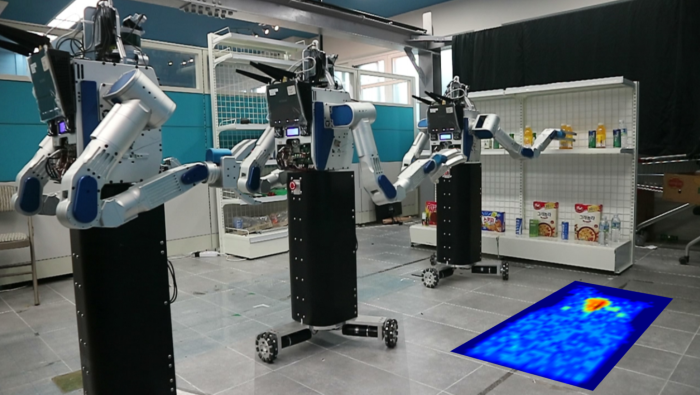




|
Hubo mobile robot in a mock-up convenient store, approaching to grap a bottle.
It is expected that robots with some sort of intelligence will be a part of our lives in future. Many challenges are ahead of us to realize robots to be a part of our lives. In this course, we will consider issues of motion planning of real and virtual robots for various applications. We will focus more on virtual robots and their applications in games, movies, virtual prototyping, crowd simulations. We will go over basic materials related to motion planning and their applications.
What you will get at the end of the course:
What you will do:

Lecture schedule (subject to change)

For your presentations, please use the this powerpoint template; paper presentation guideline is available.
Public software:
Possible project topics from Prof. Latombe's class
Previous course homepage:
Spring 17
Fall 15
Fall 13
Fall 11
Fall 09
Links to websites of some well-known researchers in motion planning
Paper search:
Acknowledgements:
The course materials are based on those of Prof. Dinesh Manocha (UNC-Chapel Hill) and Prof. David Hsu (NUS).
Thank you so much!
Copyright 2011.
Personal use of this material is permitted. However, permission to
reprint/republish this material for advertising or promotional purposes
or for creating new collective works for resale or redistribution to servers or
lists, or to reuse any copyrighted component of this work in other works
must be obtained from the author.
This material is presented to ensure timely dissemination of scholarly
and technical work. Copyright and all rights therein are retained by authors or
by other copyright holders. All persons copying this information are
expected to adhere to the terms and constraints invoked by each author's
copyright. In most cases, these works may not be reposted without the
explicit permission of the copyright holder.

Additional reference materials and links

